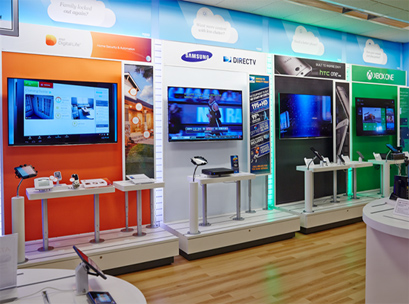 Department store chain, Sears Holdings, has posted another loss, although narrower, for the quarter, making it the seventh straight year posting declines.
Department store chain, Sears Holdings, has posted another loss, although narrower, for the quarter, making it the seventh straight year posting declines.
The parent company of Sears and Kmart has not reported a profit since 2010, although it has been pushing to return to profitability by closing its stores.
On its seventh straight money-losing year, Sears posted a net loss of $558 million, or $5.19 a share, during the fiscal third quarter, compared with a loss of $748 million, or $6.99, during the same period last year. The department store chain’s total same-store sales tumbled 15.3 per cent during the latest period.
“Dire, dismal, terrible, horrendous, grim, appalling – over the past few years we’ve used up our stock of adjectives to describe Sears results,” said Neil Saunders, managing director of GlobalData Retail. “As the descriptors run dry, so the bad numbers keep on coming. This quarter is no exception.”
Saunders said it is particularly worrying that the strength of declines across all parts of the business is intensifying.
“In this period, total sales were down by just over 27 per cent,” he said. “To be fair, more than half of this is attributable to ongoing store closures. However, that program does not explain the slump in comparable sales which were down by 17 per cent and 13 per cent at Sears and Kmart, respectively.”
Saunders said the whole group, in essence, remains in a tailspin, and it is clear that there is no chance of even a leveling-off in sales anytime soon.
“The dramatic loss of customers at existing stores continues apace, and we believe that there is a danger this trend could accelerate into the new year,” he said.
He added it is true that losses have narrowed, but Sears was still in the red by well over half a billion dollars during the quarter. By no means is this a cause for celebration.
One small bright spot comes from the agreement with the Pension Benefit Guaranty Corporation, Saunders said.
“Under this plan, Sears will make an upfront payment into the pension scheme, secured by real estate assets,” he said. “This will eliminate contributions which were required in both 2018 and 2019. This will certainly take some pressure off the bottom line in those years, although we caution that it does very little to fix the fundamental issues with the business.”
Saunders said the extent of Sears’ woes is best seen through the growing gap between its assets and its liabilities. Last year this deficit was around $3.4 billion; this year it has grown to just over $4 billion. Given that the group has been selling off assets to fund current operations, this is not particularly surprising. However, the continued growth of the deficit, at a time when the group is deeply unprofitable, simply isn’t sustainable.
“For all the criticism we throw at Sears, it is only fair to give praise to the initiatives the group is taking to try and bring itself back,” Saunders said. “While we do not have much faith that these things will be sufficient to revive the company’s fortunes, it does not mean to say that they are entirely without merit.”
The first of these is the relatively recent decision to sell some Kenmore branded appliances on Amazon, Saunders stated. This is a sensible move which should strengthen sales volumes which, in turn, should support the inherent brand value of Kenmore. Arguably, without seeking out alternative distribution channels, Sears’ brands are ultimately in danger of fading into obscurity. However, this move is also a tacit admission that its stores are simply not working effectively as a distribution channel for its own brands.
The second interesting move was the whole store sale that the group initiated before Black Friday, Saunders said. While this was probably borne out of desperation, it did help to drive footfall and interest across many stores. Unfortunately, such a strategy is not sustainable on a permanent basis – but it can be used to give sales and cash-flow a short-term boost.
“Ultimately, we still believe that Sears is a dying business,” he said. “Whichever way you cut them, the fundamental economics of the business do not add up. Nothing in this latest set of results changes our view.”
Access exclusive analysis, locked news and reports with Inside Retail Weekly. Subscribe today and get our premium print publication delivered to your door every week.





